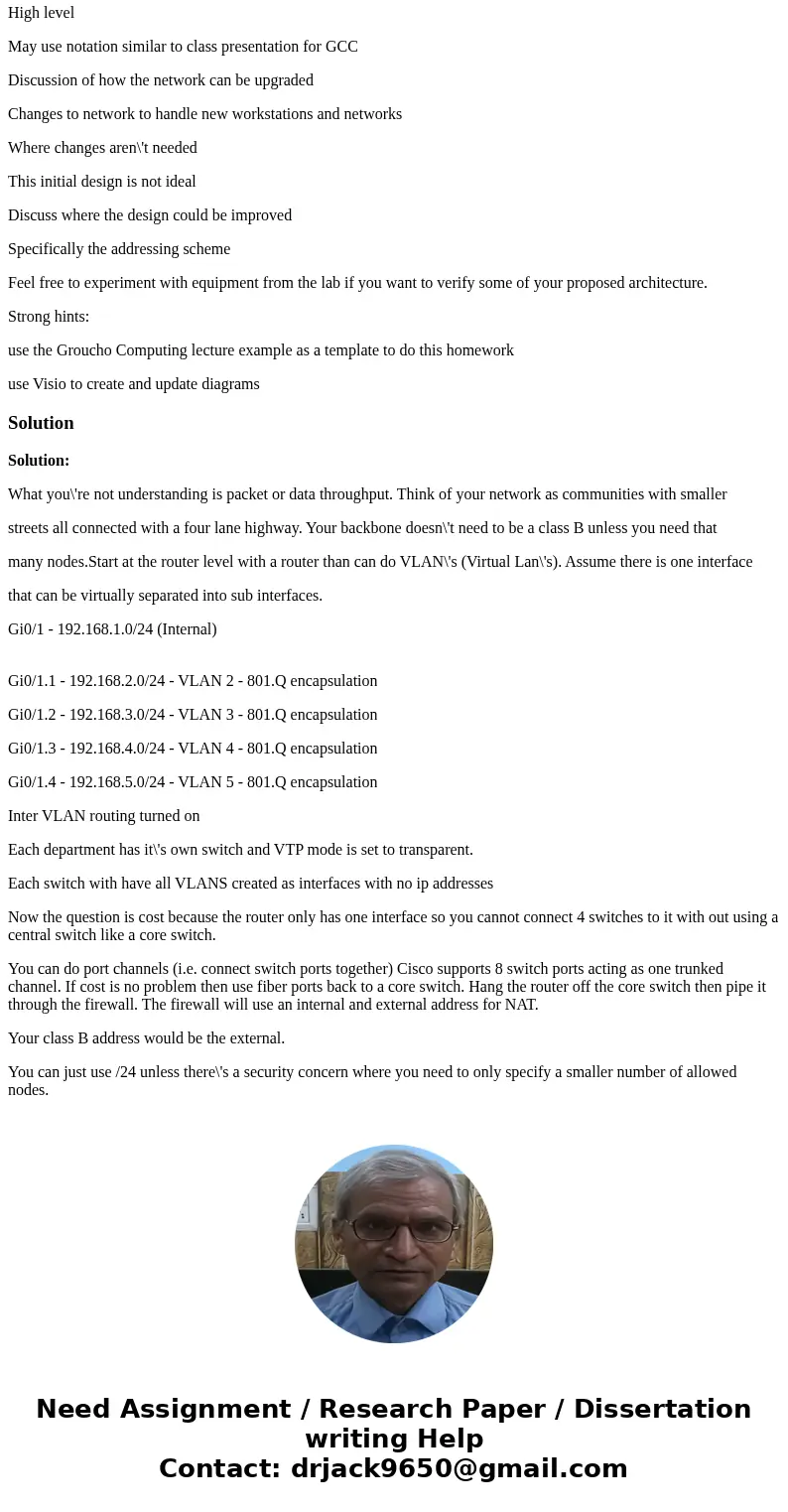I need help with the homework Im unsure how to do it I know
I need help with the homework. Im unsure how to do it. I know how to do the diagrams with visio but Im uncertain how to go with the \"no more than 30 hosts\" and then the workstations? i thought hosts and workstation were the same thing.
Initial Network Requirements:
4 Class C networks (192.168.n.0)4 departments each on their own network
Development
Human Resources (HR)
IT
Sales
Each network will, near term, have no more than 30 hosts
Assume the four networks will initially have 5, 5, 6, and 8 workstations respectively
Assume each network (department) also has its own networked printer
1 Class B backbone (172.16.n.0) (fast Ethernet)
All PCs will need to communicate with each other
Only PCs in its own network can print to their printer (Bonus Challenge)
Design to be upgradeable:
Number of Networks may increase to 28 maximum
4 of the future networks may grow to about 400-450 hosts - but never more than 500
Remaining networks will never expand beyond 50 hosts per network
The backbone will be upgraded to a 1Gb network from the current Fast Ethernet (100M)
May be copper, may be fiber
Deliverables:
Complete high-level description of the initial network with diagrams and addresses
Clearly document an algorithm so PCs, printers (other equipment?) can easily and systematically added to the network with a proper, unique IP address
Assign addresses to the workstations, printers, and any other network hardware using the above algorithm
Document how networks will be addressed (numbered)
Description of routing tables required for the initial system
High level
May use notation similar to class presentation for GCC
Discussion of how the network can be upgraded
Changes to network to handle new workstations and networks
Where changes aren\'t needed
This initial design is not ideal
Discuss where the design could be improved
Specifically the addressing scheme
Feel free to experiment with equipment from the lab if you want to verify some of your proposed architecture.
Strong hints:
use the Groucho Computing lecture example as a template to do this homework
use Visio to create and update diagrams
Solution
Solution:
What you\'re not understanding is packet or data throughput. Think of your network as communities with smaller
streets all connected with a four lane highway. Your backbone doesn\'t need to be a class B unless you need that
many nodes.Start at the router level with a router than can do VLAN\'s (Virtual Lan\'s). Assume there is one interface
that can be virtually separated into sub interfaces.
Gi0/1 - 192.168.1.0/24 (Internal)
Gi0/1.1 - 192.168.2.0/24 - VLAN 2 - 801.Q encapsulation
Gi0/1.2 - 192.168.3.0/24 - VLAN 3 - 801.Q encapsulation
Gi0/1.3 - 192.168.4.0/24 - VLAN 4 - 801.Q encapsulation
Gi0/1.4 - 192.168.5.0/24 - VLAN 5 - 801.Q encapsulation
Inter VLAN routing turned on
Each department has it\'s own switch and VTP mode is set to transparent.
Each switch with have all VLANS created as interfaces with no ip addresses
Now the question is cost because the router only has one interface so you cannot connect 4 switches to it with out using a central switch like a core switch.
You can do port channels (i.e. connect switch ports together) Cisco supports 8 switch ports acting as one trunked channel. If cost is no problem then use fiber ports back to a core switch. Hang the router off the core switch then pipe it through the firewall. The firewall will use an internal and external address for NAT.
Your class B address would be the external.
You can just use /24 unless there\'s a security concern where you need to only specify a smaller number of allowed nodes.


 Homework Sourse
Homework Sourse